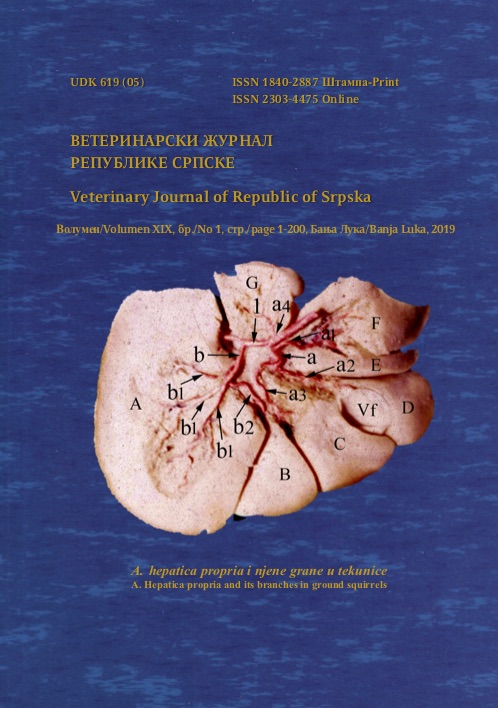FREQUENCY OF DETERMINATION OF PARENCHYMAL ORGANS DISTURBANCES DURING ULTRASOUND EXAMINATION OF REPRODUCTIVE TRACT
DOI:
https://doi.org/10.7251/VETJEN1901184PAbstract
Ultrasound Real time 2D diagnostics, being an available and non-invasive method, is
successfully used in human medicine, veterinary medicine and biology to diagnose both
physiological and pathological conditions. In the case of small animals, the ultrasound is often used
to diagnose gravidity, number, size and vitality of fetuses as well as to diagnose pathological
conditions present in the genital tract, and is also used to examine testicles and prostate of male
animals. Today's advanced use of the ultrasound diagnostics provides us with an opportunity to
detect numerous pathological conditions of reproductive tract of both female and male animals, and
those conditions directly affect health status of other internal organs. The aim of this study is to
diagnose primary genital tract disorders using the ultrasound diagnostics, as well as proving its
connection to the changes in parenchymal organs. The ultrasound examination was performed on
the total of 12 dogs, 6 male and 6 female dogs. Ovaries, uterus and the organs in the abdominal area
were examined using a transducer ranging from 5 to 8 MHz. A transducer of 7.5 MHz was used to
examine prostates and testicles. The patients were in dorsal position. Three out of six examined male
dogs exhibited changes on their prostates, and the remaining one had a tumor on the testicles. Cystitis
and hyperplasia of prostate were also found upon the examination of these dogs. One out of six
examined female dogs, had cystic endometrial hyperplasia, three of them had pyometra, and one of
them was diagnosed with an follicular cyst. In addition to these pathological conditions, changes
were noticed in the liver and pancreas. Along with the detection of primary changes in the genital
tract of both male and female animals, the ultrasound diagnostics can be used to discover consequent
changes in parenchymal organs.

